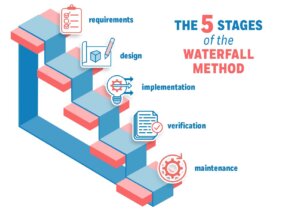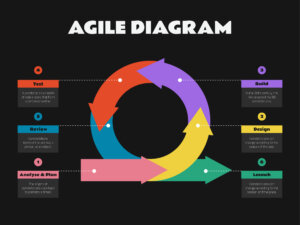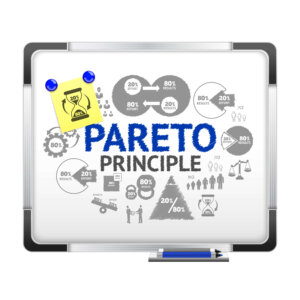Why is PRINCE2® the most popular project management exam in the world?
In September 2012, APMG-International, the PRINCE2 accreditation body announced that more than 1 million PRINCE2 project management examinations have now been sat. This is more than any other project management method. In this article, I want to explore the reasons why PRINCE2 has become so popular.
Firstly, let me explain what PRINCE2 is. PRINCE2 stands for PRojects IN Controlled Environments. It began life as a UK government framework for managing I.T. projects in the 1980s and was known as PRINCE, but was redeveloped as PRINCE2 in 1996 when it became a generic project management framework. Since then the manual has been revised several times and is widely regarded as embodying modern best practices in project management.
Since 1996 more than 1 million examinations have been sat, approximately two-thirds of which have been at the lower Foundation level and the remaining one-third at the higher Practitioner level. Both examinations are multiple-choice formats with candidates being tested for their knowledge of the framework at the Foundation level, and their ability to apply this knowledge at the Practitioner level.
Although the bulk of exams have been taken in the UK, the examination is becoming more popular in other regions, particularly in Europe. As the chart shows, for the period 2005-11, more than half of all exams were taken in the UK with a further quarter taken in the rest of Europe. Australasia was the next biggest region and North America the lowest region with less than 1% of all exams taken during the same period. So, why is the qualification so popular in the UK and Europe but less so in the US? I think the answer lies primarily in the labor market conditions of each region which is driving the requirement for job candidates to have project management qualifications.
PRINCE2, being based upon modern best practices in project management, has proven to be the project management method of choice for increasing numbers of organizations. Not only have the United Nations and NATO adopted PRINCE2, but increasing numbers of private sector companies have too. When world-class businesses such as Rolls Royce, Visa, and Vodafone adopt PRINCE2, it’s time to sit up and take notice. Driven by the need to remain competitive, more and more organizations are undergoing change, whether to business operations or through the development of new products. I think this is driving organizations to become more project-sized, and hence the need for more project managers and effective and proven project management methods.
Based in the UK, I am always struck by how many students are taking a PRINCE2 course and exams because they see PRINCE2 qualifications as important ingredients on their resumes. Employers are seeking increasing numbers of project managers and require the qualifications to match. The situation in North America is quite different in that most employers are likely to want candidates with the PMI’s PMP qualification rather than PRINCE2. This simply reflects the fact that the PMI’s PMP qualification and the PMBOK® GUIDE are more widely known and understood in North America, whereas PRINCE2 is better known and understood in the UK and Europe.
So, are PRINCE2 and PMBOK simply two different choices in how to manage projects? Is the choice of which one to use simply a matter of personal preference? Well, I think that the PMBOK and PRINCE2 bring slightly different but complimentary elements and project managers can benefit from applying both. The PMBOK explains the knowledge required by a project manager to perform core project management practices such as time and cost management. However, it does not cover the responsibilities of other members of the project management team such as the project sponsor, users, suppliers, and team managers. Nor does it cover other important aspects such as project governance. Students who attend PMP training are often left wondering afterward how they should actually start the project.
PRINCE2 on the other hand is a process-based approach that clearly describes what needs to be done, by whom, and when during a project. It doesn’t concern itself with the knowledge areas of the PMBOK and leaves it up to the project manager to choose appropriate techniques. PRINCE2 is a process framework for planning, managing, and controlling any shape or size of a project in a systematic manner. Having used PRINCE2 on many projects, I find its principles-based approach is extremely flexible in the way it can be implemented. Its focus on ‘management by exception’ can also save senior management time because there is no need for regular progress meetings. It is these benefits of PRINCE2 and the ease with which it can be used which I think is encouraging its adoption by more and more organizations.
So, if you’ve already studied and used the PMBOK and gained your PMP qualification, is it time to study and take a PRINCE2 exam? Yes. By attending PRINCE2 training it will help you understand how your detailed knowledge of the PMBOK can be complemented by the process clarity and project control elements of PRINCE2 and so help you deliver your project more effectively. Now, will you plan to take your PRINCE2 exam?
—————————
For more resources, see the Library topic Project Management.
—————————
Simon Buehring is based in the UK and is the founder and Managing Director of Knowledge Train which is a PRINCE2 accredited training company.
PRINCE2® is a registered trademark of the Cabinet Office. PMBOK® GUIDE, PMI and PMP are registered trade and service marks of The Project Management Institute, Inc.
 Sections of this topic
Sections of this topic












